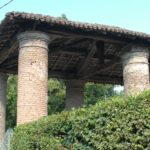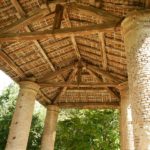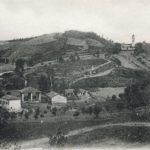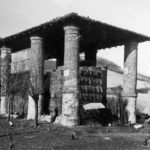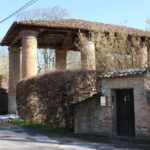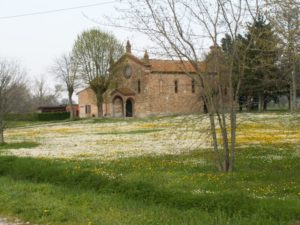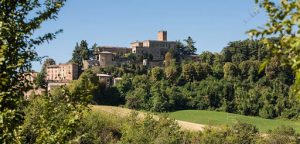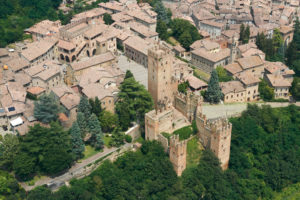Terra de Salsis – The “Farnesiane” Salt Mines in Salsominore

An imposing and unusual industrial building is that of the Salsominore Salt Mines, the only remaining 17th-century plant, in a larger system of production sites, which at the time of the domination of the Farnese consisted of at least three factories: that of Salsominore, another, along the road to Tabiano in Centopozzi, and the largest in the center of Salsomaggiore where it stood, near the Berziers , what was once the Royal Institute of Chemistry. The history of the territory is closely linked to that of the salt flats, since the activities of water extraction, their use first to obtain salt and later for thermalism, have a deep impact on the transformations of the landscape over time. The fossil deposits of salsobromoiodic water trapped in the underground, are the legacy of the sea waters that in remote geological eras have occupied and transformed this part of the Po Valley. The chronicles date the first uses of the “salt” waters to the Iron Age, linking them to traces of Celts, Ligurian and Roman settlements that, along the road between Salsomaggiore and Fidenza begin to extract water to obtain salt, precious food for the preservation of food. Most of the ancient wells are destroyed, however, following an earthquake and flooding that hit the territory in 589. After about two centuries many wells are rediscovered and put back into use. It is Charlemagne himself, in 801, who organized the mining activity and, according to legend, assigned to the main villages of salt, the names of Salsominore and Salsomaggiore. Since the year, the salt has become one of the greatest sources of wealth of the feudal state of the Pallavicino, which here builds fortresses and castles intended to control both the activity of water extraction and the forestry activity, necessary to have the timber to burn for the production process of salt. Since the year, the salt has become one of the greatest sources of wealth of the feudal state of the Pallavicino, which here builds fortresses and castles intended to control both the activity of water extraction and the forestry activity, necessary to have the timber to burn for the production process of salt. The subsequent Farnese domination is due instead to a proto-industrial conception of the production activity, with the construction of the saline and with images that testify to rather curious inventions: for example, a well equipped with a huge wheel for the extraction of water, which was operated by life sentences.
In the Farnesian salt mines the salt was made by evaporation: the water was placed in iron basins under which the timber from the woods around was burned, according to a very complex plan of plantings and cuts. The structures consisted of evaporation buildings, depots, residences of workers and nearby shafts. This production system was only dissolved in the first half of the 19th century, when the territory converted to agricultural crops. Even today, salt is still obtained from salsobromoiodic water for food use: extraction techniques derive from the chemical industry that developed at the beginning of the 20th century.
